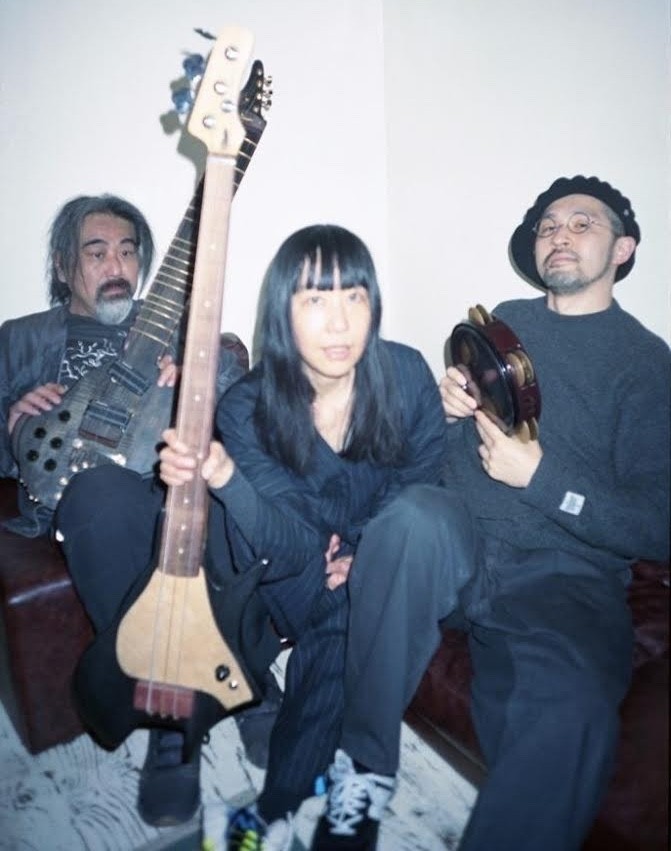I now want to give DJ Mark Farina's famous Mushroom Jazz series some thought. But first, a little background on the man himself: Born and raised in Chicago, Farina began his musical career in the house scene of the late '80s. In the early '90s, he spun records with the legendary house producer Derrick Carter on WNUR, and, also with Carter, he was a resident DJ at Chicago's house club Shelter, where he mixed, according Simon Reynolds's invaluable short article "The Techno Revolution," "ambient techno." (Derrick Carter mixed "a dark sexual groove.") In 1992, Farina moved to San Francisco and was quickly absorbed by its then-robust acid-jazz scene.
Four years later, in 1996, San Francisco–based Om Records released Mushroom Jazz, a compilation of European and American acid-jazz and downtempo tracks mixed by Farina. Acid jazz eventually became downtempo, and Mushroom Jazz formed something of a bridge from the acid jazz of the first half of the '90s to the downtempo of the second half of the '90s. You could hear this transition in the Mushroom mix, a transition from a form of music more drawn to jazz and funk to one more drawn to hiphop and spacy dub effects, or, put in another way, a transition from the Brand New Heavies (the pinnacle of acid jazz) to Thievery Corporation (the pinnacle of downtempo).
Mushroom Jazz spawned a series that recently reached its fifth-volume mark (in 2005) and defines not only Farina's mood and style but also the mood and style of the record label Om. Without the Mushroom Jazz series, Om would be nothing to most of us.
Now let's turn our thoughts to the substance of the Mushroom Jazz series. What are these mixes really about? And why are they better than most downtempo mixes? The answer will not be found in Farina's mixing abilities—he is not an outstanding DJ, a dazzling turntablist, a wizard like Jeff Mills. Indeed, his mixing style is simply honest and competent. Farina has, to borrow an expression from the street, "his shit down." And that's about all. What makes Farina remarkable is not the art of the mixes, but their politics. Like Thievery Corporation, and unlike most downtempo producers and DJs, Farina sees the music he mixes as a means of (a way to) personal and social liberation. For him, the dance floor is an area rich in revolutionary potential; with the right music and the right attitude, the movement of a dancer can challenge the ruling order of things.
Farina first announces his political program in the second half of Mushroom Jazz. It is the best moment in the mix. After he blends Paul Johnson's "If We Lose Our Way" and Hydroponic Groove Session's "In Hale"—the movement from Johnson to Session essentially representing the movement from the serious funk of acid jazz to the deep hiphop of downtempo—the raspy voice of what must be a bebop musician says: "Some of the music we play is not geared for your bumping enjoyment. It's geared for you to think. For those of you who don't think too much, I'm telling you that shit before we drop it on you."
The man who makes this statement is not identified; he appears out of the sonic blue and is mixed and scratched into the thick layers of funk, bhangra, dub, and hiphop. The point of his statement is the point of Farina's Mushroom Jazz: This music is about the politics of the dance floor, about dancing intelligently, dancing with your mind, your thoughts, your desire for freedom. Farina is not interested in "bumping enjoyment" but thinking enjoyment. The mind thinks, the body moves with the thought, and, to use the words of LKJ, "oppression is shattered" by the groove. And the track "In Hale" is one of the deepest grooves to come out of the '90s—its bass has the heaviness of a cargo ship, its drums the sonic depth of dub, and at the bottom of all this, there is the shimmering beauty of an underwater world, much like the one imagined by Drexciya: a bubble metropolis that is socially open and culturally globalized.
At the start of Mushroom Jazz Vol. 2, a woman appears out of the black silence and says: "All my life I've been dancing; it's a social kind of thing.... Whenever I was unhappy or not feeling well, I would dance around the table.... But now that I have more knowledge, there is a concept behind [my] dancing." The positive concept behind her dancing is the positive concept behind the politics of Farina's mixes. 



















